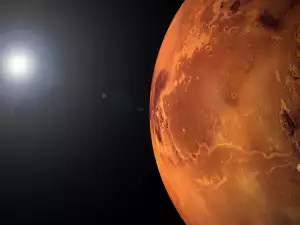Mars has a dry surface with rising dunes and never-ending dust storms which can break down the instruments on board the Curiosity rover. If we ever want to create a colony on the Red Planet, we'll have to find ways to deal with these types of conditions, writes the Daily Mail.
Researchers in Georgia, US, believe they've found the answer to this problem. According to them it lies in the way mammals and insects use their fur/hairs to keep themselves clean. The find was made while scientists from the Georgia Institute of Technology were studying 27 species of mammals and insects.
They specifically focused on the fur of several species of animals, which even though it gets dirty, remains clean. Some animals are active in dealing with the dirt, using their energy and physiology. Dogs shake off water from their backs just like a washing machine, says researcher Guillermo Amador.
Bees use their legs to clean off pollen from their eyes and body. Fruit flies use the hairs on their head and thorax to get rid of any dust on them by accelerating to 500 times Earth's gravity, he adds.
In other animals there are even more effective passive methods, not requiring energy expenditure. The eyelashes of mammals for example keep air flow to a minimum and push particles away from the eyes. Crickets have sharp points on their wings which act like needles, popping bacteria in the air as if they were water balloons.
It is these non-energy requiring methods of cleaning that the Institute team is trying to figure out how to apply technologically.
Understanding how biological systems, such as eyelashes, keep out dirt by interacting with the environment can inspire the development of low-energy solutions of keeping sensitive equipment free of dust and debris, says David Hu, professor at Georgia Tech and one of the heads of the study.
Drones and other automated rovers, including the machines already sent to Mars, are susceptible to failure because of the accumulation of dust particles on them. During their research, scientists made another surprising discovery - the ratio of the number of hairs to the size of the animal can differ by over 100 times in some animals.
Bees, for example, have the same number of hairs as squirrels - 3 million. At the same time, butterflies and moths have over 10 billion hairs. The human head, by comparison, has just 100 000.













